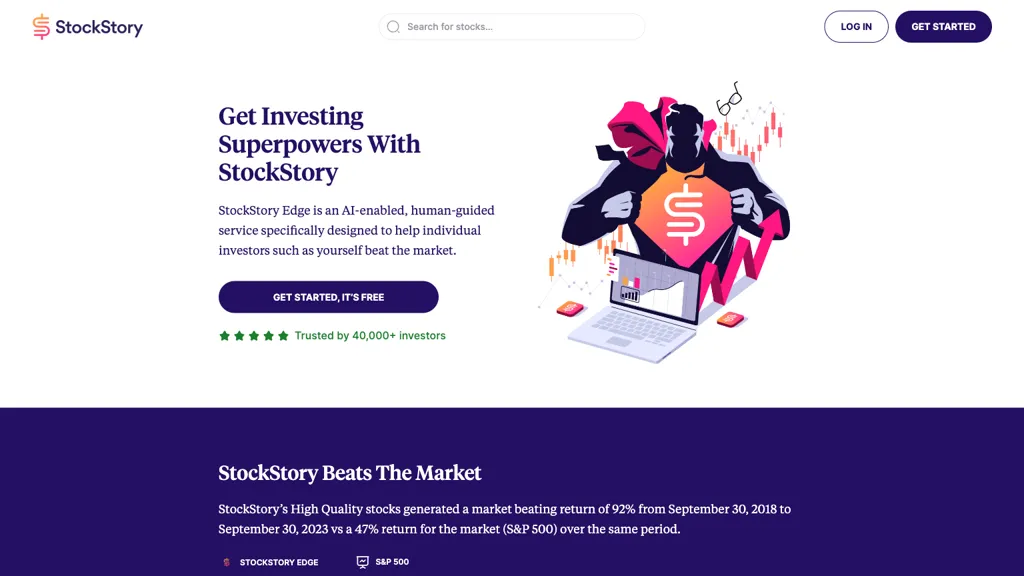It is crucial to evaluate the price and cost of AI trading platforms which predict or analyze stock prices. This will allow you to avoid any hidden costs or charges. Pricing structures vary widely and it is important to be aware of what you're receiving for your money. Below are the top 10 ways to assess the price and costs of these platforms.
1. Learn about the Pricing Model
Subscription-based platforms: Find out the cost of an annual or monthly cost. Also, find out what features come with each level.
Pay-per-use: Check whether the platform charges you according to the amount of usage (e.g. the amount of transactions, requests for data or even predictions).
Freemium model: Check if the platform offers the free version with only a few features, and charges for premium features.
2. Compare Pricing Tiers
Overview of features: See the features included in each pricing the tier (e.g. basic, professional, enterprise).
Scalability. You must ensure that you have the appropriate pricing for your needs.
Upgrade flexibility: Find out if your plan can be easily upgraded or decreased as your requirements change.
3. Evaluate Hidden Costs
Data fees - Determine if the platform charges an additional cost to access the most valuable data (e.g. data in real-time, advanced analytics).
Brokerage fees: Find out whether the platform is charged additional fees to execute trades or connect with brokers.
API use: Find out if you will incur additional costs for high frequency API usage or API access.
4. Demos as well as Free Trials and Test Drives
Trial period: Search for platforms that provide the opportunity for a free trial or demo to test their features prior to committing.
Trial limitations: Determine if the free trial includes all features or is restricted in its functionality.
Optional with no commitment You are able to end your trial without incurring fees if you feel that the platform does not satisfy your needs.
5. Find discounts and special offers
Discounts on annual plans: Find out for discounts that the platform offers compared to the monthly plans they offer.
Referral programs: Find out whether the platform offers discounts or credits for referring users.
Request pricing for institutional customers when you belong to an enterprise with many employees.
6. Review the Return on the investment
Cost vs. Value: Find out if the features and predictions of the platform justify the cost. Are you able to save time or make better decisions in trading?
Examine the platform's performance and user reviews in order to estimate the potential return on investment.
Costs of alternative: Compare platform cost with the cost of not using the platform (e.g. missed opportunities, time spent on manual analysis).
Review Cancellation/Refund Policies
Terms of cancellation: Make sure you can cancel your subscription with no penalties or hidden fees.
Refund Policy: Check if your platform allows you to get an amount of money back if the subscription is not utilized.
Auto-renewal Check to determine whether your platform automatically renews and find out how you can decide to opt out.
8. Pricing should be transparent
Clare pricing: Make sure that the platform's pricing is clearly stated and includes no hidden charges.
Customer support: Contact customer service to clarify any pricing issues or costs.
Terms of service: Read the conditions of service to be aware of the long-term commitments and penalties.
9. Compare with Competitors
Feature comparison Comparison of pricing and features offered by the platform against its rivals to make sure you're getting the best price.
User reviews: Read feedback from the users about the platform, and decide if it's worth the money.
Positioning in the market: Find out the positioning of your platform as a low-cost, mid-tier or premium alternative. Also, make sure its price matches with your expectations.
10. Review the long-term costs
Price increases: Take a look at the past history of the platform and note how often it raises prices.
Feature Additions: Evaluate whether there are any new features available in your current package or whether you should upgrade.
Costs of Scalability: Ensure that the pricing of your platform is reasonable as your trading activity or demands for data expand.
Bonus Tips
Test different platforms. Test the effectiveness and performance of multiple platforms by testing their capabilities during free trials.
Negotiate the price: If are a frequent user or a part of a large organization Ask for discounts or special pricing.
Find educational resources on the internet There are some platforms that offer free educational resources or tools which can be valuable beyond the core features of their platform.
The following tips can help you evaluate the pricing and costs of AI software for predicting and analyzing stocks. You can select one that fits your budget, while providing the features you require. A reputable platform will provide the right balance between affordability and functionality, helping you to maximize your trading performance. Have a look at the most popular best ai trading app hints for blog info including ai stock trading, trading with ai, ai stock trading app, ai stocks, investing ai, ai for investing, incite, ai for trading, ai stock market, investment ai and more.

Top 10 Tips For Evaluating The Speed And Latency Of Ai Stock Predicting/Analyzing Platforms
For high-frequency, algorithmic, and active traders the area of speed and latencies are crucial when evaluating AI platforms for stock forecasting and analyzing. Milliseconds of delay could adversely affect the profitability of trades and execution. Here are 10 top strategies to evaluate the speed and latency of these platforms.
1. Real-time data feeds: How do you assess them
Data delivery: Ensure that the platform is able to transmit data in real-time with a minimum delay (e.g. less than milliseconds).
Data source closeness: Determine whether servers are close to major exchanges.
Data compression: Examine for efficient methods of data compression that accelerate the transfer of data.
2. Test Trade Speed of Execution
Speed of processing orders The speed at which the platform completes and processes trades after you have submitted an order.
Direct market access: Ensure that the platform allows direct orders to be made to the exchange.
Reports on execution. Make sure the platform offers comprehensive execution reports. These reports must include timestamps for order submission, confirmation and fill.
3. Assess Platform Responsiveness
User interface (UI) speed: See the speed at which the UI of your platform responds to inputs (e.g. pressing buttons or loading charts).
Chart updates: Make sure you check if charts and visualizations update in real-time without lag.
Performance of mobile apps If you are you're using a mobile app make sure it runs as quickly as the desktop version.
4. Find out if the network infrastructure is low-latency.
Server locations: Ensure the platform uses low-latency servers located near major financial hubs or exchanges.
Co-location services: Find out whether the exchange offers co-location, which allows you to host your trading algorithm on servers near to the exchange.
High-speed Networks: Confirm the platform's use of high-speed, fiber-optic network or other technologies with low latency.
5. Review the results of backtesting and simulate speed
Check how quickly the platform analyses and processes historical data.
Latency in simulation: Ensure that the platform is able to simulate trades with no noticeable delays.
Parallel processing: Make sure your platform supports parallel processing, also known as distributed computing, which speeds the process of complex calculations.
6. Calculate API Latency
API response time: Check how fast the platform's API responds to requests (e.g. retrieving market data, placing an order).
Rate limits: Make sure you know if API has reasonable rates limits to avoid delays during high-frequency trades.
WebSocket Support: Determine whether your platform is compatible with WebSocket protocols that stream data in real time and at a low latency.
7. Test the stability of your platform using Load
High-volume Trading: Create huge numbers of trading scenarios to test if your platform is responsive and stable.
Market volatility: Test the platform at periods of high volatility in order to determine if it is able to cope with rapid price adjustments.
See whether there are any tools available for testing strategies for extreme situations.
8. Study the network and its connectivity
Internet speed demands. Check that your connection is fast enough to meet the speed recommended by the platform to achieve optimal performance.
Reliable connections: Make sure that the platform has redundant internet connections to prevent interruptions.
VPN latency. If you're using VPN, VPN check to see whether it creates a significant amount of latency.
9. Check for Speed Optimisation Features
Pre-trade Analytics: Ensure that the platform has pre-trade analytics to optimize the routing of orders, execution speed and other factors.
Smart order routing (SOR) often referred to as smart order routing is a method of determining the most speedy and cost effective execution venues.
Monitoring latency Make sure your platform lets you track and analyze your latency in real-time.
10. Review User Feedback and Benchmarks
User reviews: Look for user feedback on the platform to gauge its speed and speed.
Third-party benchmarks: Seek out independently-run benchmarks or reviews that compare the speed of the platform with competitors.
Case studies: Find out whether the platform provides cases studies or testimonials that showcase its ability to work with low-latency.
Bonus Tips
Trial period for free: Try the platform's speed and latency in real-world situations using the demo or free trial.
Customer support - Check if there is a support service available for issues related to latency, optimization, or any other problems.
Hardware requirements: Find out if you need specific hardware for optimal performance (e.g. high-performance computers).
By following these tips to evaluate the speed and latency of AI stock predicting/analyzing trading platforms, ensuring you choose a platform that meets your requirements for trading and reduces the time it takes to complete. Platforms that are low-latency are essential for high-frequency algorithmic traders. Small delays can negatively impact their profits. View the recommended can ai predict stock market for blog tips including ai stock predictions, ai stock prediction, stock predictor, chart analysis ai, chart ai trading, ai trading tool, best ai stocks to buy now, best ai stock prediction, can ai predict stock market, ai trading tool and more.
